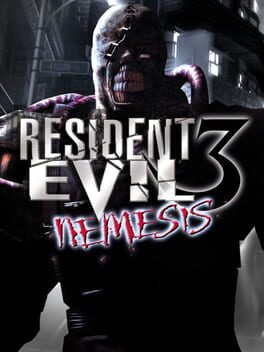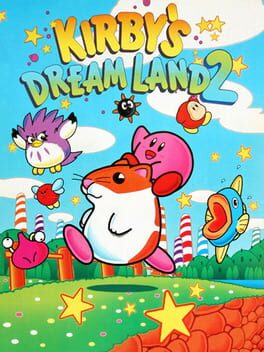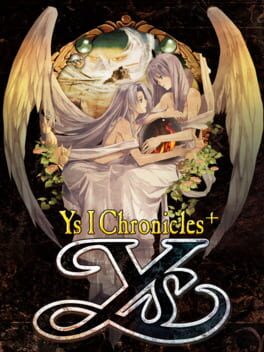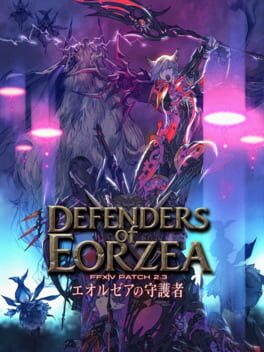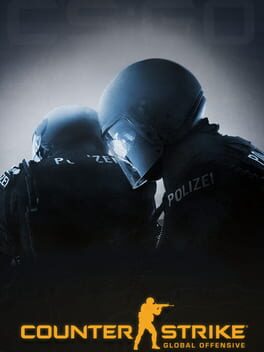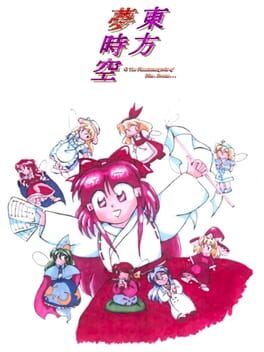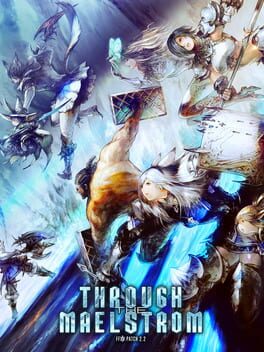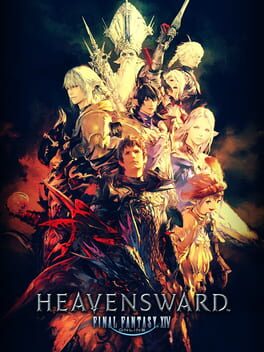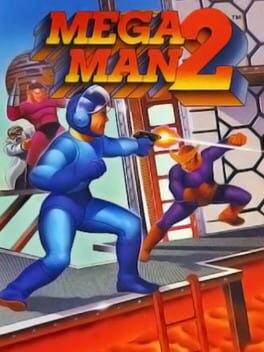SwitSwat
BACKER
When I first started playing this, I couldn't help but feel like I was setting myself up for disappointment. Resident Evil 2 is one of my absolute favorite games of all time (despite me being terrible at survival horror). The initial hour or so I spent with this game was mostly very stressful and confusing. The city setting just wasn't as fun to navigate as the police station in 2; not to mention I was getting my ass handed to me constantly with the narrow alleyways and annoying enemy placements. I mean, it's certainly just a "git gud" moment, but even when I was learning the ropes with RE2, I was still having fun learning. Not here. And so, I shelved the game, hoping to come back to it later with a newfound sense of appreciation.
Fast forward a few months to June 2nd, 2022 - Sony's State of Play. Among the reveals, we got our first look at the RE4 remake. It was hype and exactly the motivation boost I needed to return to the series. I figured I should cross this one off the backlog before moving on to RE4 again (which I had shelved as well). I ended up going through the rest of the game in a single day.
Now, it needs to be said, I still have some gripes with this one. In particular, I think the city portion is still vastly inferior to the police station. I ended up enjoying it for the most part, but it's still the primary reason I'm not planning on replaying this anytime soon. It feels a bit too large. Backtracking is a given in these games, but it felt particularly grueling in these early sections. But the clock tower and factory? Those were really fun.
As for Nemesis, there is one fight with him in particular that is just straight up broken. If ya know, ya know. Aside from that, I was dreading the random encounters with him. I don't mind the tank controls of these early RE games, but when you are trying to haul ass in the opposite direction because you suddenly get jumped by disfigured Thanos wanting to erase your progress, it's slightly annoying and terrifying. Thankfully, it didn't happen as often as I expected, so I'll give it a pass.
While gameplay is nearly identical to the previous 2 games, there does seem to be less puzzle solving here, with some added combat experimentation through the ability of crafting special ammunition through various gunpowder combinations. I hoarded most of the ones I found until the endgame so I can tear ass in the final fight. And let me tell you, that was a deliciously satisfying time. Oh, and they added a dodge mechanic but, I can barely execute it when I try. Most of the time I do, it's on accident. Another "git gud" moment, for sure.
Overall, it's a fantastic game. One which I kind of lament not loving at first. But I have to admit that RE2 really spoiled me. I'm aware of this game's rushed development, and I have no doubt that this game could have been a masterpiece if they had just spent a while longer working on it.
Fast forward a few months to June 2nd, 2022 - Sony's State of Play. Among the reveals, we got our first look at the RE4 remake. It was hype and exactly the motivation boost I needed to return to the series. I figured I should cross this one off the backlog before moving on to RE4 again (which I had shelved as well). I ended up going through the rest of the game in a single day.
Now, it needs to be said, I still have some gripes with this one. In particular, I think the city portion is still vastly inferior to the police station. I ended up enjoying it for the most part, but it's still the primary reason I'm not planning on replaying this anytime soon. It feels a bit too large. Backtracking is a given in these games, but it felt particularly grueling in these early sections. But the clock tower and factory? Those were really fun.
As for Nemesis, there is one fight with him in particular that is just straight up broken. If ya know, ya know. Aside from that, I was dreading the random encounters with him. I don't mind the tank controls of these early RE games, but when you are trying to haul ass in the opposite direction because you suddenly get jumped by disfigured Thanos wanting to erase your progress, it's slightly annoying and terrifying. Thankfully, it didn't happen as often as I expected, so I'll give it a pass.
While gameplay is nearly identical to the previous 2 games, there does seem to be less puzzle solving here, with some added combat experimentation through the ability of crafting special ammunition through various gunpowder combinations. I hoarded most of the ones I found until the endgame so I can tear ass in the final fight. And let me tell you, that was a deliciously satisfying time. Oh, and they added a dodge mechanic but, I can barely execute it when I try. Most of the time I do, it's on accident. Another "git gud" moment, for sure.
Overall, it's a fantastic game. One which I kind of lament not loving at first. But I have to admit that RE2 really spoiled me. I'm aware of this game's rushed development, and I have no doubt that this game could have been a masterpiece if they had just spent a while longer working on it.
1990
As a Mega Man copycat, it gets the job done. You get a new special ability after completing each stage, some of which are necessary to traverse certain obstacles and make some bosses easier (most of which are easy enough as is, though). You can also find heart containers to increase your hit points from 3 to a maximum of 5. The game overall is fairly easy until you get to Stage 7, and that's where you really start to notice the cracks in the level design and mechanics.
Stage 7 is straight up broken. A vertically scrolling level of platform jumping that seems longer than it actually is because of annoyingly difficult it is. Like with a lot of other platformers of this era, there is a knockback effect when you take damage, which basically requires you to get through this level without getting hit because that knockback will just knock you off the platform and out of bounds. Trying to hit enemies while making some of these jumps is way harder than it should be. To add insult to injury, they later add these rockets that come from below which explode and also damage you. If you somehow manage to make it to the top without save states, prepare to do it all over again, because the boss will probably destroy you on your first few attempts as you try to learn its attack patterns. There's a password system, but it only takes you to level 7, so good luck trying to beat this game legit. Losing to the final boss in Stage 9 just takes you back to the start of the level, which is probably the second hardest stage in the game. So yeah, fun... But what about lives?
This game has a very strange way of earning lives. Instead of having them placed in certain spots in each level like Mega Man, you have to win them in these mini games at the end of each stage. Sounds simple in concept, but you can only take a crack at these mini games if you have enough coins. These coins can only be earned from defeating enemies with a charged shot. You basically just gotta play each stage holding that fire button waiting for an enemy to pop up. And playing these mini games doesn't guarantee that you will win anything. It's just a gambling system and it sucks. I only ever managed to play any of these mini games three times. The first two times won me nothing. Then I got 6 lives on my third attempt. I would have had more coins to try more times, but I was too busy trying to survive by spamming my attack sometimes that I didn't want to risk trying to land charged shots on most enemies.
Also tangent, but why in the unholy mother of Alucard does touching any surface when in bat form cause you to revert back? I can't tell you how many times I died just trying to fly over some obstacles only to touch a wall and fall to my death because bat form controls like you're on invisible ice. Also, would have been nice to select abilities from a pause menu like Mega Man, because sometimes you want to switch in the middle of battle, and you'll take damage trying to scroll through it.
At least levels 1-6 are mostly fair. Some still have some annoying sections, but nothing too bad. I would say I enjoyed these levels. They're not great, but they're competent enough. But all the issues I had with its design, along with the rage factor that comes with the stages afterwards, downgrades this game from what would otherwise be a solid Mega Man clone to a mediocre platformer.
Stage 7 is straight up broken. A vertically scrolling level of platform jumping that seems longer than it actually is because of annoyingly difficult it is. Like with a lot of other platformers of this era, there is a knockback effect when you take damage, which basically requires you to get through this level without getting hit because that knockback will just knock you off the platform and out of bounds. Trying to hit enemies while making some of these jumps is way harder than it should be. To add insult to injury, they later add these rockets that come from below which explode and also damage you. If you somehow manage to make it to the top without save states, prepare to do it all over again, because the boss will probably destroy you on your first few attempts as you try to learn its attack patterns. There's a password system, but it only takes you to level 7, so good luck trying to beat this game legit. Losing to the final boss in Stage 9 just takes you back to the start of the level, which is probably the second hardest stage in the game. So yeah, fun... But what about lives?
This game has a very strange way of earning lives. Instead of having them placed in certain spots in each level like Mega Man, you have to win them in these mini games at the end of each stage. Sounds simple in concept, but you can only take a crack at these mini games if you have enough coins. These coins can only be earned from defeating enemies with a charged shot. You basically just gotta play each stage holding that fire button waiting for an enemy to pop up. And playing these mini games doesn't guarantee that you will win anything. It's just a gambling system and it sucks. I only ever managed to play any of these mini games three times. The first two times won me nothing. Then I got 6 lives on my third attempt. I would have had more coins to try more times, but I was too busy trying to survive by spamming my attack sometimes that I didn't want to risk trying to land charged shots on most enemies.
Also tangent, but why in the unholy mother of Alucard does touching any surface when in bat form cause you to revert back? I can't tell you how many times I died just trying to fly over some obstacles only to touch a wall and fall to my death because bat form controls like you're on invisible ice. Also, would have been nice to select abilities from a pause menu like Mega Man, because sometimes you want to switch in the middle of battle, and you'll take damage trying to scroll through it.
At least levels 1-6 are mostly fair. Some still have some annoying sections, but nothing too bad. I would say I enjoyed these levels. They're not great, but they're competent enough. But all the issues I had with its design, along with the rage factor that comes with the stages afterwards, downgrades this game from what would otherwise be a solid Mega Man clone to a mediocre platformer.
2013
1995
Replaying the first Dream Land game got me in the mood to replay the sequel as well. And gosh darnit, it's actually quite a bit better than I remember. You actually get more than 5 stages this time! Like, a lot more. Already that's a big plus one over the original, which was a decent game but was severely held back by its lack of content. Dream Land 2 is still a short game, but it's about on par with what you would expect from a Game Boy platformer.
The copy ability which was absent in the first game is now here to stay, which is nice and all, but it's not as cool as the animal buddies that were introduced here. These are the reason the game is sometimes a real blast. If you can hold onto Rick (the hamster) or Coo (the owl), you will be golden. Kine is a nice fish, but he's only really useful underwater. Once you're out of water, get rid of him, because he will most certainly get you killed.
Initially, I was dead set on giving this game a 7. I was enjoying my time with it quite a bit. Nice, simple fun. But that changed once I got to Level 5. Some of the stages here and in the next 2 levels have some really annoying level design that is sure to screw you over not once, or even twice, but possibly multiple times. I distinctly remember 5-2 and 5-5 having a horrible auto-scrolling portion that ate through my lives. But not all of the stages in the latter half are terrible, and most have some merit to them. There are just more difficult sections sprinkled throughout them. If it wasn't for this erratic tedium I encountered, the game would have been even better. But as it stands, it's definitely an improvement over DL1, and certainly better than any of the Mario Land games on Gameboy.
By the way, while not exactly a trend, I hate how this game initiated the concept of locking the true final boss behind 100% collectibles for Kirby games. Like, can you not? Thankfully, there's only 7 thinga-majigs here. Gee, I sure hope Dream Land 3 doesn't have as many, either... oh...
The copy ability which was absent in the first game is now here to stay, which is nice and all, but it's not as cool as the animal buddies that were introduced here. These are the reason the game is sometimes a real blast. If you can hold onto Rick (the hamster) or Coo (the owl), you will be golden. Kine is a nice fish, but he's only really useful underwater. Once you're out of water, get rid of him, because he will most certainly get you killed.
Initially, I was dead set on giving this game a 7. I was enjoying my time with it quite a bit. Nice, simple fun. But that changed once I got to Level 5. Some of the stages here and in the next 2 levels have some really annoying level design that is sure to screw you over not once, or even twice, but possibly multiple times. I distinctly remember 5-2 and 5-5 having a horrible auto-scrolling portion that ate through my lives. But not all of the stages in the latter half are terrible, and most have some merit to them. There are just more difficult sections sprinkled throughout them. If it wasn't for this erratic tedium I encountered, the game would have been even better. But as it stands, it's definitely an improvement over DL1, and certainly better than any of the Mario Land games on Gameboy.
By the way, while not exactly a trend, I hate how this game initiated the concept of locking the true final boss behind 100% collectibles for Kirby games. Like, can you not? Thankfully, there's only 7 thinga-majigs here. Gee, I sure hope Dream Land 3 doesn't have as many, either... oh...
2013
Often released as a bundle with its immediate sequel, Ys I really is just one half of a bigger whole. However, since it still works as its own standalone game, I decided to review them separately. As the first Ys game I ever played, there was an initial sense of confusion as I tried to figure out the somewhat archaic combat system and lack of explicit guidance. Thankfully, once it clicked, I enjoyed my short time with it and made me eager to check out the rest of the series.
Story: Adol Christin is a young, wandering adventurer who happens to come across the town of Minea, in the land of Esteria. Here, he meets a fortuneteller named Sara, who informs him of a terrible evil that he must ultimately bring an end to (nothing new, amirite?). In order to do this, he must find the six Books of Ys; text which contains the history of the ancient land of Ys and the knowledge needed to bring an end to the dark forces at bay.
Despite containing a simple plot, it’s still impressive to note how it exceeds expectations for a game released in 1987. In the same year that The Legend of Zelda released for the NES in North America, Falcom was creating an ambitious duology that not only contains plenty of dialogue, but also fairly interesting lore in the way of solid worldbuilding, interesting NPC conversations, and a fairly detailed and expansive backstory for the main hero in the original game’s manual; a backstory containing locale and event descriptions that would continue to be referenced in future games to this day.
Gameplay: This was the biggest roadblock upon starting the game. The infamous “bump” combat is a weird system that, although easy to understand, is incredibly awkward to execute for a first-time player and takes a bit of getting used to. But once I did, I was making mincemeat of enemies left and right. The bump combat simply involves running into enemies at an off angle in order to minimize damage received and increase damage taken. There is no attack button involved for this. The main limitation to this is the lack of variety. Even during bosses, it’s mainly a matter of learning its attack pattern and just bumping into their weak spot when possible. Still, the game is short, which helps a bit with its inevitable redundancy. Not to mention, the boss designs are damn cool and the fights themselves are still fun and challenging.
As with any RPG, you level up after gaining enough experience points. And trust me, if you feel like you are doing next to no damage to a boss, then you have to grind. Because here’s the thing: The level cap is 10. That’s right, you can only reach level 10 in this game, which means that each level gives you quite the significant boost to strength and defense. With each new area, enemies give a lot more EXP, so grinding isn’t much of a problem in this game, as it’s fairly quick.
Apart from this, there’s also a shop where you can buy better equipment, as is typical for the genre.
Through this short journey, NPC’s will give you hints on certain items you must find and use in order to make progress. None of these are usually too cryptic but, backtracking and traversing some of the maze-like dungeons can be a bit of a chore unless you look up a map. The final dungeon is especially huge and can be a bit of pain. And um… if I can just vent for a second…: WHAT WERE THEY THINKING WITH THAT FINAL BOSS? All I can say is, prepare your butthole.
Music: Um… yeah… There is no reason for the music to be this good. Honestly, all the Ys games I’ve played have had great soundtracks, but it’s especially impressive to hear these tracks from a game released 35 years ago. Granted, with this being a remaster, the soundtrack has been re-recorded and remixed, but even after listening to the original soundtrack, it’s amazing to hear the foundation of a wonderfully melodic and haunting track list that perfectly captures the sense of adventure. Not much else to say here. The music is fantastic.
Ys is a series that usually flies under the radar of many RPG fans, and even with the recent success of VIII and IX, many would still be hard pressed to return to the series’ roots. I believe it’s well worth it, though. Ys I (and II) may not be a perfect experience, and it is admittedly not for everyone, but with its short playtime and classic Falcom charm, it just begs to be given a chance and experienced.
Final Score: Light 7/10
Story: Adol Christin is a young, wandering adventurer who happens to come across the town of Minea, in the land of Esteria. Here, he meets a fortuneteller named Sara, who informs him of a terrible evil that he must ultimately bring an end to (nothing new, amirite?). In order to do this, he must find the six Books of Ys; text which contains the history of the ancient land of Ys and the knowledge needed to bring an end to the dark forces at bay.
Despite containing a simple plot, it’s still impressive to note how it exceeds expectations for a game released in 1987. In the same year that The Legend of Zelda released for the NES in North America, Falcom was creating an ambitious duology that not only contains plenty of dialogue, but also fairly interesting lore in the way of solid worldbuilding, interesting NPC conversations, and a fairly detailed and expansive backstory for the main hero in the original game’s manual; a backstory containing locale and event descriptions that would continue to be referenced in future games to this day.
Gameplay: This was the biggest roadblock upon starting the game. The infamous “bump” combat is a weird system that, although easy to understand, is incredibly awkward to execute for a first-time player and takes a bit of getting used to. But once I did, I was making mincemeat of enemies left and right. The bump combat simply involves running into enemies at an off angle in order to minimize damage received and increase damage taken. There is no attack button involved for this. The main limitation to this is the lack of variety. Even during bosses, it’s mainly a matter of learning its attack pattern and just bumping into their weak spot when possible. Still, the game is short, which helps a bit with its inevitable redundancy. Not to mention, the boss designs are damn cool and the fights themselves are still fun and challenging.
As with any RPG, you level up after gaining enough experience points. And trust me, if you feel like you are doing next to no damage to a boss, then you have to grind. Because here’s the thing: The level cap is 10. That’s right, you can only reach level 10 in this game, which means that each level gives you quite the significant boost to strength and defense. With each new area, enemies give a lot more EXP, so grinding isn’t much of a problem in this game, as it’s fairly quick.
Apart from this, there’s also a shop where you can buy better equipment, as is typical for the genre.
Through this short journey, NPC’s will give you hints on certain items you must find and use in order to make progress. None of these are usually too cryptic but, backtracking and traversing some of the maze-like dungeons can be a bit of a chore unless you look up a map. The final dungeon is especially huge and can be a bit of pain. And um… if I can just vent for a second…: WHAT WERE THEY THINKING WITH THAT FINAL BOSS? All I can say is, prepare your butthole.
Music: Um… yeah… There is no reason for the music to be this good. Honestly, all the Ys games I’ve played have had great soundtracks, but it’s especially impressive to hear these tracks from a game released 35 years ago. Granted, with this being a remaster, the soundtrack has been re-recorded and remixed, but even after listening to the original soundtrack, it’s amazing to hear the foundation of a wonderfully melodic and haunting track list that perfectly captures the sense of adventure. Not much else to say here. The music is fantastic.
Ys is a series that usually flies under the radar of many RPG fans, and even with the recent success of VIII and IX, many would still be hard pressed to return to the series’ roots. I believe it’s well worth it, though. Ys I (and II) may not be a perfect experience, and it is admittedly not for everyone, but with its short playtime and classic Falcom charm, it just begs to be given a chance and experienced.
Final Score: Light 7/10
2012
It's crazy to think that it's been a decade since this game came out. Indies were starting to gain a lot more traction and attention and Hotline Miami had its time in the spotlight. I attempted to get into it back then, but I found it frustratingly difficult to the point that I shelved it within the first half hour.
As part of someone's suggestion, I decided to revisit it again with an open mind. I certainly got farther this time, and I will say, I was actually enjoying it. But the satisfaction that came with the fast-paced mayhem did not last. Even as early as Chapter 3, the game's difficulty started to rear its ugly head again. And yeah, I know a lot of people will just say "get gud," but as someone who enjoys a good challenge from time to time, I don't feel like this game does it fairly.
Maybe it's just me, but aiming is a constant struggle in this game. Even when I try to sneak behind an enemy to line up my shot perfectly, I still somehow miss half the time. Spraying and praying is not an option either because that usually leads to every enemy being alerted of my position, and one of them is bound to kill me. And even if I manage to down a large group, it's hard to tell if one of them survived among the pile of bodies until it's too late and you have no time to react. Apart from that, you also have the really aggressive AI which often comes for you off screen...
I spent almost half an hour trying to beat Chapter 4 and when I got close to clearing the first area, some enemy sniped me from the very edge of the screen through a window. I didn't even know it was a window at first. That was pretty much when I threw in the towel. I just couldn't stand to persevere through the frustration.
Hotline Miami is definitely a game which shows its appeal. But between the janky aim controls and ridiculous difficulty, I find it hard to enjoy. I might never finish it, but I don't mind admitting that I'm probably just not good enough at its mechanics.
As part of someone's suggestion, I decided to revisit it again with an open mind. I certainly got farther this time, and I will say, I was actually enjoying it. But the satisfaction that came with the fast-paced mayhem did not last. Even as early as Chapter 3, the game's difficulty started to rear its ugly head again. And yeah, I know a lot of people will just say "get gud," but as someone who enjoys a good challenge from time to time, I don't feel like this game does it fairly.
Maybe it's just me, but aiming is a constant struggle in this game. Even when I try to sneak behind an enemy to line up my shot perfectly, I still somehow miss half the time. Spraying and praying is not an option either because that usually leads to every enemy being alerted of my position, and one of them is bound to kill me. And even if I manage to down a large group, it's hard to tell if one of them survived among the pile of bodies until it's too late and you have no time to react. Apart from that, you also have the really aggressive AI which often comes for you off screen...
I spent almost half an hour trying to beat Chapter 4 and when I got close to clearing the first area, some enemy sniped me from the very edge of the screen through a window. I didn't even know it was a window at first. That was pretty much when I threw in the towel. I just couldn't stand to persevere through the frustration.
Hotline Miami is definitely a game which shows its appeal. But between the janky aim controls and ridiculous difficulty, I find it hard to enjoy. I might never finish it, but I don't mind admitting that I'm probably just not good enough at its mechanics.
2018
Now that I've finished both routes, I have to commend the developer for mostly succeeding at making a DMC-style action game that feels competent enough to be fun despite some janky movement. But that's mainly all this game has going for it.
Story? Throwaway drivel.
Level design? Pretty much nonexistent.
Enemy variety? Severely lacking.
I can't say that the developer didn't try but, playing through this just made me wish I was playing DMC instead, or even Bayonetta. If you can ignore the plot and are looking for something to scratch that hack-n-slash itch, I can just barely recommend it at a heavy discount.
P.S. The second to last boss of Amelia's route is built different. I'd rather beat Orphan of Kos again.
Story? Throwaway drivel.
Level design? Pretty much nonexistent.
Enemy variety? Severely lacking.
I can't say that the developer didn't try but, playing through this just made me wish I was playing DMC instead, or even Bayonetta. If you can ignore the plot and are looking for something to scratch that hack-n-slash itch, I can just barely recommend it at a heavy discount.
P.S. The second to last boss of Amelia's route is built different. I'd rather beat Orphan of Kos again.
This review contains spoilers
I have to agree with a few reviewers on here about this one. Patch 2.3 seems incredibly unfocused, to the point that I felt like I was playing through pieces of three different patches in one. The first half was especially uneventful and pretty boring. But once I got to the Ramuh fight (my favorite trial so far), things really picked up.
And can we talk about the Sultana's sudden breakdown? I don't think I've ever been as quick to shed tears as I did with this scene. And when she hugged Raubahn... ohh my heart! I literally want to see Teledji dead now. If not for treason, but just for making the cute Lalafell cry!
This patch would be the best so far if it was more consistent. As it stands though, the second half is at the very least interesting and offers the best chunk of story in these post-ARR patches so far (except for the lame recruiting mission).
And can we talk about the Sultana's sudden breakdown? I don't think I've ever been as quick to shed tears as I did with this scene. And when she hugged Raubahn... ohh my heart! I literally want to see Teledji dead now. If not for treason, but just for making the cute Lalafell cry!
This patch would be the best so far if it was more consistent. As it stands though, the second half is at the very least interesting and offers the best chunk of story in these post-ARR patches so far (except for the lame recruiting mission).
I started playing CSGO around 2013. The game was still very much in its infancy, and at the time I had no prior experience with the series in general. To say that I got hooked is an understatement. As of typing this out, I have accumulated about 3800 hours of playtime, which is not something I'm proud of, but it shows just how much I loved it. Sure, there was a lot of toxicity, hacking, griefing, and just generally unpleasant company in your team sometimes, but the core gameplay and genuinely good matches one could have outweighed most of the negativity to be found here.
Unfortunately, we are witnessing the end of an era here. September 27, 2023: CS2 has just released as a massive overhaul to CSGO. New engine, new physics, new graphics. On paper it all sounds great, and there are indeed a lot of great additions and improvements; likewise, there are plenty of negatives to come of this as well, but lest I start dissecting it too much, I'll save it for the actual CS2 review. The fact of the matter is that the original CSGO holds an incredible amount of sentimental value and got me through much of my adolescent free time. I sincerely hope Valve someday brings back CSGO in some capacity for those who will forever remain nostalgic for it. Personally, this was and still is the golden standard for online competitive shooters.
Unfortunately, we are witnessing the end of an era here. September 27, 2023: CS2 has just released as a massive overhaul to CSGO. New engine, new physics, new graphics. On paper it all sounds great, and there are indeed a lot of great additions and improvements; likewise, there are plenty of negatives to come of this as well, but lest I start dissecting it too much, I'll save it for the actual CS2 review. The fact of the matter is that the original CSGO holds an incredible amount of sentimental value and got me through much of my adolescent free time. I sincerely hope Valve someday brings back CSGO in some capacity for those who will forever remain nostalgic for it. Personally, this was and still is the golden standard for online competitive shooters.
Touhou 3 continues the early trend of ZUN trying out new things for each game, and while the VS. format is a novel concept and is executed decently enough, I got sufficiently attached to the previous game that I was hoping for more of that. This format also lends itself to a much easier game overall; save for the final boss, which had a sizeable difficulty spike that ruined my initial 1cc run dream. I'll probably go back and try this out with a friend at some point, but it's fun enough as a single player experience, regardless.
This review contains spoilers
Wait, racism is bad? Wow, who knew? Patch 2.2 continues to serve as more set-up, but this time with a larger focus on compelling storytelling (actual voiced cutscenes, hooray!). Yugiri seems like an interesting character, and it's funny that I just so happened to unlock Ninja during this time, as its quest line makes mentions of Yugiri and Doma as a whole (it is their fighting style, afterall). I can't say that I'm too invested in the Ascians subplot, yet. As of right now, they're just giving me Organization XIII vibes, but without the personality.
Leviathan made for a cool trial boss, despite our party getting wiped on the first attempt. I'm starting to wonder how anyone is supposed to figure out these attack patterns without any explanation or multiple re-attempts. I didn't even notice the tail on Leviathan until someone pointed it out to me. Maybe I should tamper with my lock-on settings again. But I digress; I'm a sprout, and this is mainly a skill issue. I'll get there.
And oh boy, I got chills when Teledji stared at the camera and said: "Revolution..." I honestly did not see his role as a villain coming.
Leviathan made for a cool trial boss, despite our party getting wiped on the first attempt. I'm starting to wonder how anyone is supposed to figure out these attack patterns without any explanation or multiple re-attempts. I didn't even notice the tail on Leviathan until someone pointed it out to me. Maybe I should tamper with my lock-on settings again. But I digress; I'm a sprout, and this is mainly a skill issue. I'll get there.
And oh boy, I got chills when Teledji stared at the camera and said: "Revolution..." I honestly did not see his role as a villain coming.
This is the worst of the Game Boy Mario Land titles. Wario controls about as well as you'd expect a fat old fart to control. He's slow, heavy, and frankly not much fun to play as. I understand that they were trying something new, but it just doesn't work for me. It's kind of insulting that this is even called SML3. Should have just been its own thing, but I'm sure that that title guaranteed more sales. After all, who the hell was Wario?
Apart from the sluggish gameplay, some of the level design here is just down-right annoying. I'd give some specific examples, but I've forgotten most of everything that I experienced because it was boring, and I slogged through it all right before heading to work. Needless to say, I felt pretty dead during the whole shift. I hope the sequels manage to turn things around for me.
Apart from the sluggish gameplay, some of the level design here is just down-right annoying. I'd give some specific examples, but I've forgotten most of everything that I experienced because it was boring, and I slogged through it all right before heading to work. Needless to say, I felt pretty dead during the whole shift. I hope the sequels manage to turn things around for me.
This review contains spoilers
Patch 3.3 presents a new standard in quality for future patches. This is the true ending to Heavensward, bringing a resolution to the Dragonsong War, and ushering in a new era for Ishgard proper. I'll admit, I was somewhat adamant at first, with the first couple of MSQs meandering a bit, but once I got to the dungeon, it did not let up.
The trial against Nidhogg was the best in the game up to this point, and my first attemot was a pretty hilarious party wipe. Epic fight. And when Ysayle and Haurchefant showed up to help from the beyond? Oh man, I almost bawled. Just beautiful.
Oh... and was that Alisaie I saw near the end? It's about time!
The trial against Nidhogg was the best in the game up to this point, and my first attemot was a pretty hilarious party wipe. Epic fight. And when Ysayle and Haurchefant showed up to help from the beyond? Oh man, I almost bawled. Just beautiful.
Oh... and was that Alisaie I saw near the end? It's about time!
Dragons, Dragoons, and Deceit... Oh My...
For the longest time, Heavensward was a name that held this air of mystery to it. It sounded elegant and enticing, but also seemed so out of reach (hah, get it?), for even years before I properly attempted to get into FF14, I was aware that this first expansion is where a lot of the community promised the game would get good. And look, I liked ARR. Sure, it was very slow at times, but it had some genuinely good story beats and did a good enough job at introducing the world of Eorzea and its gameplay mechanics. Of course, I still had those higher expectations going into HW, but a lot of people were hyping it up as a 10/10 masterpiece, and I guess if you didn't like ARR, it very well could be, but that wasn't the case for me.
But hey, for what it's worth, HW is definitely a strong improvement over ARR, with much better pacing, a more intriguing story, stronger character moments, and less filler quests (though, in an MMO, that's still going to be a thing). And I'll be honest, despite this first expansion being more interesting from the get-go, it still took me quite a while to reach that "Eureka!" moment. Because for as much as I enjoyed this expansion, I still felt like a dog searching for scraps. The incredible moments of explosive plot development and hard-hitting emotional beats are few and far between, and the story doesn't really start to pick up until the level 57 quests. All that to say that, again, a masterpiece this is not, but I can easily see why it is regarded as such by many. I don't doubt that the Stockholm Syndrome theory surely applies to quite a few players.
But lest I start to sound like I'm just bashing on it, Heavensward felt geuinely rewarding to go through, even as someone who still enjoyed ARR quite a bit. With how stagnant a lot of ARR's story felt, it was great to see how some its more ambitious writing, mainly found in the later post-game patches, flowed into this expansion and kept a satisfying consistency. In fact, this is where the game started feeling less like an MMO and more like a single-player experience with mostly optional multiplayer content. As someone who mainly started playing for the story, this is a big plus, but I'm also happy to say that the game has hooked me in sufficiently with its gameplay systems that I am now looking forward to going through harder optional content in the future. Yes guys, I'm actually trying to learn how to play my class, and I will do so for every other class eventually.
By the way, on the subject of aether currents, it's so funny to see other new players complaining about them when they could just automatically fly after finishing ARR. What many don't realize is that ARR flight was added in a patch much later. Personally, I think the aether system is a bit inconvenient, sure, but it's a logical system, and it doesn't require that much time to find and complete their relevant quests.
My thoughts on the post-game patches:
Patch 3.1 - As Goes Light, So Goes Darkness
Patch 3.2 - The Gears of Change
Patch 3.3 - Revenge of the Horde
Patch 3.4 - Soul Survivor
Patch 3.5 - The Far Edge of Fate
Without Post-Game Patches: Decent 8/10
With Post-Game Patches: Strong 8/10
For the longest time, Heavensward was a name that held this air of mystery to it. It sounded elegant and enticing, but also seemed so out of reach (hah, get it?), for even years before I properly attempted to get into FF14, I was aware that this first expansion is where a lot of the community promised the game would get good. And look, I liked ARR. Sure, it was very slow at times, but it had some genuinely good story beats and did a good enough job at introducing the world of Eorzea and its gameplay mechanics. Of course, I still had those higher expectations going into HW, but a lot of people were hyping it up as a 10/10 masterpiece, and I guess if you didn't like ARR, it very well could be, but that wasn't the case for me.
But hey, for what it's worth, HW is definitely a strong improvement over ARR, with much better pacing, a more intriguing story, stronger character moments, and less filler quests (though, in an MMO, that's still going to be a thing). And I'll be honest, despite this first expansion being more interesting from the get-go, it still took me quite a while to reach that "Eureka!" moment. Because for as much as I enjoyed this expansion, I still felt like a dog searching for scraps. The incredible moments of explosive plot development and hard-hitting emotional beats are few and far between, and the story doesn't really start to pick up until the level 57 quests. All that to say that, again, a masterpiece this is not, but I can easily see why it is regarded as such by many. I don't doubt that the Stockholm Syndrome theory surely applies to quite a few players.
But lest I start to sound like I'm just bashing on it, Heavensward felt geuinely rewarding to go through, even as someone who still enjoyed ARR quite a bit. With how stagnant a lot of ARR's story felt, it was great to see how some its more ambitious writing, mainly found in the later post-game patches, flowed into this expansion and kept a satisfying consistency. In fact, this is where the game started feeling less like an MMO and more like a single-player experience with mostly optional multiplayer content. As someone who mainly started playing for the story, this is a big plus, but I'm also happy to say that the game has hooked me in sufficiently with its gameplay systems that I am now looking forward to going through harder optional content in the future. Yes guys, I'm actually trying to learn how to play my class, and I will do so for every other class eventually.
By the way, on the subject of aether currents, it's so funny to see other new players complaining about them when they could just automatically fly after finishing ARR. What many don't realize is that ARR flight was added in a patch much later. Personally, I think the aether system is a bit inconvenient, sure, but it's a logical system, and it doesn't require that much time to find and complete their relevant quests.
My thoughts on the post-game patches:
Patch 3.1 - As Goes Light, So Goes Darkness
Patch 3.2 - The Gears of Change
Patch 3.3 - Revenge of the Horde
Patch 3.4 - Soul Survivor
Patch 3.5 - The Far Edge of Fate
Without Post-Game Patches: Decent 8/10
With Post-Game Patches: Strong 8/10
1989
The original Mega Man is the only one in the series I really have any nostalgia for. Finishing it as a kid with no save states is still probably my proudest achievement in gaming. Still, its easy to see how its difficulty and general unpolish keeps it from being a fan favorite. On the other hand, it seems that MM2 tends to always get brought up on the topic of "best Mega Man games," and it's easy to see why.
Gameplay remains relatively unchanged, but the difficulty (save for a few late games sections) has been greatly reduced through better enemy placement/spawns and less tedious level design. The boss count has also been increased, though most of them were perhaps too easy, I think.
It may shock you, but I still prefer MM1 on an overall first playthrough. However, first impressions aren't everything, and while I appreciate the hours of fun that MM1 provided me as a kid, I'm not sure I can stomach another playthrough of it (without save states) anytime soon. On the other hand, I have just finished MM2 for a second time shortly before typing up this review, and I can safely say that it has great replay value. It's just an overall breezy, fun platformer; one which I can definitely understand its enduring appeal.
Gameplay remains relatively unchanged, but the difficulty (save for a few late games sections) has been greatly reduced through better enemy placement/spawns and less tedious level design. The boss count has also been increased, though most of them were perhaps too easy, I think.
It may shock you, but I still prefer MM1 on an overall first playthrough. However, first impressions aren't everything, and while I appreciate the hours of fun that MM1 provided me as a kid, I'm not sure I can stomach another playthrough of it (without save states) anytime soon. On the other hand, I have just finished MM2 for a second time shortly before typing up this review, and I can safely say that it has great replay value. It's just an overall breezy, fun platformer; one which I can definitely understand its enduring appeal.
